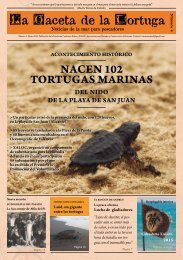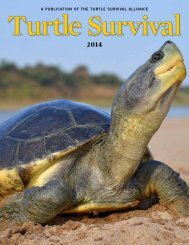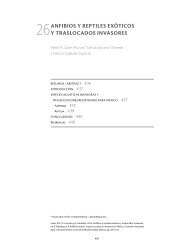tsrp63entire
tsrp63entire
tsrp63entire
You also want an ePaper? Increase the reach of your titles
YUMPU automatically turns print PDFs into web optimized ePapers that Google loves.
1. Introduction<br />
The native frogs of New Zealand possess some of the most ancestral features of any living frogs<br />
in the world. Four extant species are formally recognised: Archey’s frog (Leiopelma archeyi),<br />
Hochstetter’s frog (L. hochstetteri), Maud Island frog (L. pakeka) and Hamilton’s frog<br />
(L. hamiltoni).<br />
Native frogs were formerly widespread and common throughout New Zealand, including lowland<br />
habitats. However, they are now much reduced in geographic and altitudinal range, with remnant<br />
populations of the terrestrial Hamilton’s frog and Maud Island frog only occurring on predatorfree<br />
islands in the Marlborough Sounds, and the terrestrial Archey’s frog and the semi-aquatic<br />
Hochstetter’s frog being found in scattered locations on the mainland of the North Island.<br />
The first native frog recovery plan was published in 1996 (Newman 1996). That plan spanned<br />
5 years and led to the formation of the Native Frog Recovery Group. Over this period, frog<br />
recovery work focused on establishing new populations of the island species, and developing<br />
survey and monitoring techniques.<br />
In the later years of the 1996 plan, a disease caused by the amphibian chytrid fungus<br />
(Batrachochytrium dendrobatidis) was discovered in Archey’s frog, which coincided with serious<br />
declines in one population (Bell et al. 2004c). Therefore, since this time, research on amphibian<br />
disease and the establishment of captive populations have been additional foci for frog<br />
recovery work.<br />
In 2004, the achievements of the 1996 native frog recovery plan were reviewed (Tocher et al.<br />
2004) and the preparation of a new plan was recommended. This document is based on that<br />
review, while also taking into account more recent information on the status of<br />
and threats to native frogs.<br />
2. Plan term and review date<br />
Term of the plan: 5 years, from July 2013 to July 2018.<br />
Review date: July 2017.<br />
2 Bishop et al.—Native frog recovery plan, 2013–2018





